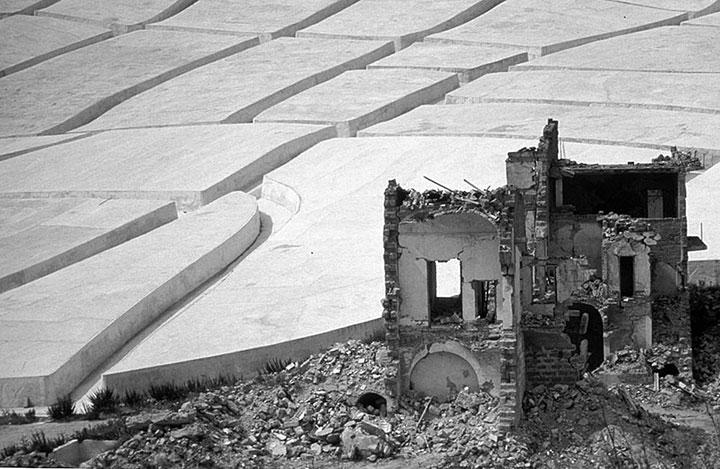Deconstructing Reconstruction
Sicily has a history of great earthquakes. Namely in 1693 a devastating earthquake destroyed over 70 towns in total. The reconstruction plans of these town were of three types: move the town to a new site, rebuild at the same site with a completely new town plan or rebuild using the existing town plan. Examples of towns that fell in the first category were Avola and Noto, their former locations now being known as Avola Antica and Noto Antica. Catania is an example of a city that was rebuilt on the same site to a new plan, while adapting some of the existing structures. Syracuse is an exam- ple of a city rebuilt entirely to its existing plan.
The workshop will question the impact of these decisions. When is it appropriate to start over again from scratch; how do we preserve authenticity within reconstruction; when is the erosion or partial demolition more iconic or important that the original state; which memory takes priority; how can homage be payed to an existing notion when starting over from scratch.
The workshop will consist of 3 phases:
1 - Extracting a notion from a physical element of architecture found in Syracuse; Identifying a core idea and injecting it into a new design; in the form of an abstract wooden object.
2 -The finished object will then be altered/destroyed/transformed... in a manner and method of choice by another student
3 - A third student is then given the task to either recreate / preserve / create something complete new from the new state of the object. With or without reference or memory of the existing notion/ aesthetic qualities of the original object.
The process will be presented through photography of the first 2 phases, and the physical recon- structed object of the third phase. Each student is involved in each of the 3 phases, taking part creative-ownership of three different projects as a result.
- Slot 1
1st slot . 22—27.July
 Gibellina, Alberto Burri
Gibellina, Alberto Burri


